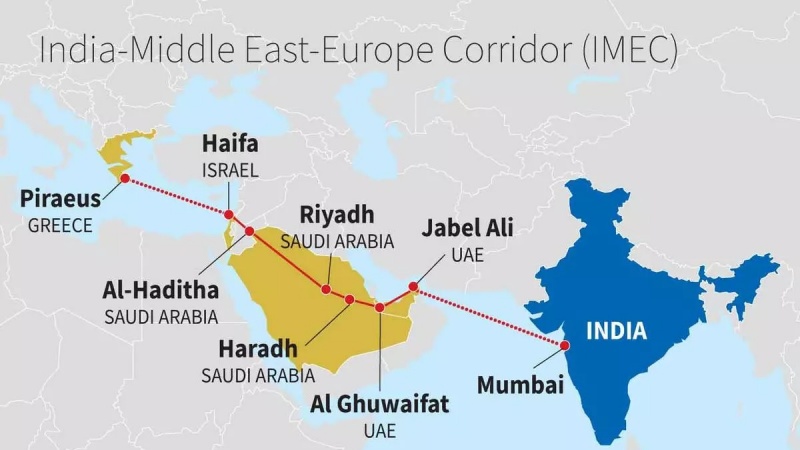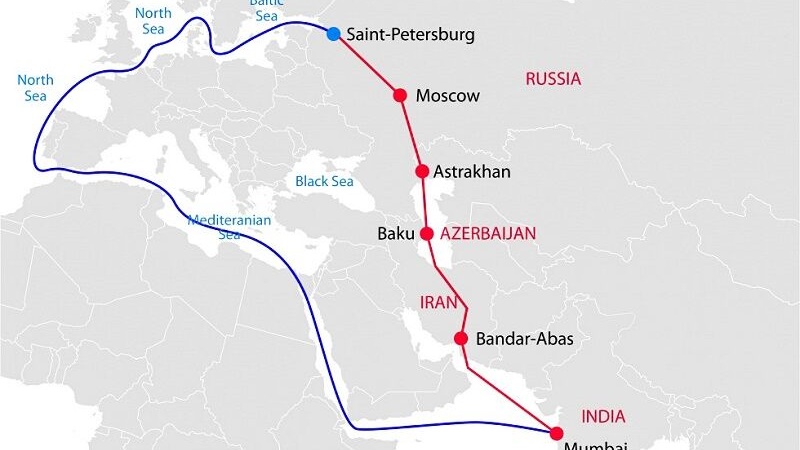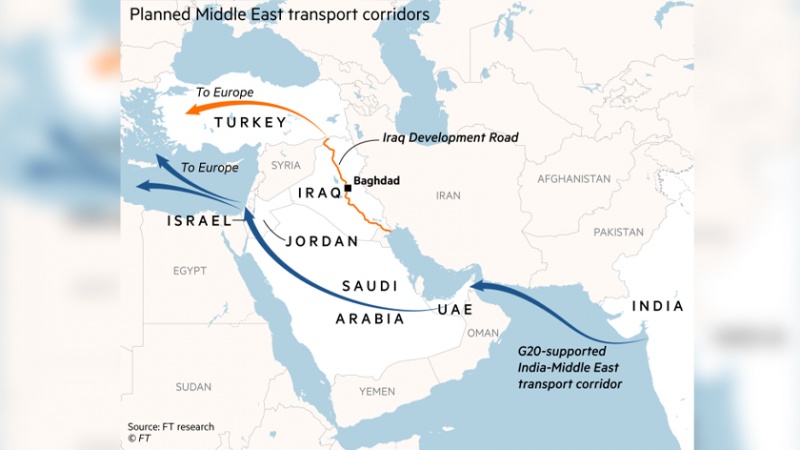Iran Press/ Commentary: The competition and struggle for influence between China and the US in many areas, especially in technology, trade, and regional activity, has been growing recently.
While tensions between Beijing and Washington are rising with their statements on Taiwan, the reciprocal steps taken by the two countries in various fields are making tensions come to the fore even more.
The US continues to develop alliance and partnership ties with countries in the region to create a balance against China's growing influence in the Asia-Pacific. Sovereignty disputes in the South China Sea bring other countries closer to the US. Besides regional influence, there are also a number of tensions between the two countries in the technological field. The competition between the US administration and China, especially in chip production, has been heating up recently. Washington has taken a number of steps to block China's access to chips and the equipment used in their production, citing "national security." In recent years, the US has imposed restrictions on importing and using products from some Chinese technology companies, especially Huawei.
Meanwhile, although the authorities have not yet confirmed it, reports that China has banned the use of iPhones by public employees surfaced in the international press last week.
While the growing competition and struggle for influence between the US and China in many areas are on the agenda, another step, which will anger the Beijing administration, was taken at the G-20 summit hosted by India on Sept. 9-10. At the summit, a memorandum of understanding was signed between India, the US, Saudi Arabia, the United Arab Emirates, France, Germany, Italy, and the EU on the establishment of the India-Middle East-Europe Economic Corridor (IMEC), which will help increase trade, provide energy resources, and develop digital connectivity.
The India-Middle East-Europe Economic Corridor (IMEC)

While the countries signing the memorandum did not make a binding financial commitment, they agreed to prepare an "action plan" for creating the corridor within two months. Compared to the old Spice Road, the India-Middle East-Europe Economic Corridor (IMEC) will start from Mumbai, India, and reach the port in Dubai, the UAE, by sea, and from there to Al Gheweifat district by iron. It will then pass through the Haradh district of Saudi Arabia and the city of Riyadh, reaching Jordan and then the Israeli port city of Haifa. The products that will be taken from Haifa to Greece's port of Piraeus by sea will be transported to Europe by land from here. If the project is implemented, the existing route used for product trade between India and Europe will be shortened by about 40%.
One Belt, One Road Initiative
 One Belt, One Road Initiative
One Belt, One Road Initiative
The Indo-Middle East-Europe Economic Corridor will affect the future and effectiveness of the Belt and Road Project, which aims to increase Beijing's trade with Central Asia, Europe, the Middle East, and Africa. This initiative, announced by Chinese President Xi Jinping during his visit to Kazakhstan in 2013, is called China's "Marshall Plan."
The project, to which more than 150 countries and international organizations have contributed over the past ten years, aims to increase Beijing's trade power in an area that covers two-thirds of the world's population. China's initiative to connect to the world covers rail, land, and sea routes and is receiving global attention. The corridor consists of six main routes and is estimated to cover over 2,600 projects in more than 100 countries. One of these routes is the Middle Corridor Initiative, which begins in Turkey and extends all the way to China.
Reaching Georgia, Azerbaijan, and the Caspian Sea by rail and land from Turkey, respectively, the Belt and Road Initiative then travels through Turkmenistan, Uzbekistan, Kyrgyzstan, and Kazakhstan to reach China using the Caspian Pass.
Experts estimate that China will spend $1.3 trillion on this initiative by 2027, which is expected to increase global trade volume by more than 6 percent. Some countries view this project as a "great economic opportunity," while others consider it "dangerous." As a result of this initiative, China has strengthened its political and commercial relations with Middle Eastern and African countries, significantly increasing its influence in the region.
International North-South Transport Corridor
 International North-South Transport Corridor
International North-South Transport Corridor
Another project that India is spearheading in the region is the International North-South Transport Corridor, which it is trying to turn into Russia.
On September 12, 2000, the International North-South Transport Corridor was established by an agreement signed between Russia, Iran, and India. In the following years, ten other countries, including Azerbaijan and Turkey, joined it. The purpose of the establishment of the North-South Transport Corridor is to reduce the transportation time of cargoes that go from India to Russia, as well as to Northern and Western Europe.
This corridor, which is not yet fully built, has an important place for bilateral and commercial relations between Russia and Iran, which are the target of Western sanctions.
Türkiye's offer to deal with IMEC
 Türkiye's offer to deal with IMEC
Türkiye's offer to deal with IMEC
The other significant project in the region is the International North-South Transport Corridor spearheaded by India. Established on September 12, 2000, through an agreement signed between Russia, Iran, and India, this corridor aims to reduce transportation time for cargo traveling from India to Russia as well as Northern and Western Europe. Over the years, ten other countries including Azerbaijan and Turkey have joined this corridor. Although not fully completed yet, it plays a crucial role in bilateral and commercial relations between Russia and Iran despite facing Western sanctions.
One major weakness of Israel's proposed IMEC (Indo-Middle East Corridor) is the non-participation of three important countries: China in the Far East, Iran, and Turkey in the Middle East. The absence of these three countries poses several challenges for this plan, most notably its high cost. While China may not have much interest in participating due to competition with India's involvement in their own initiative called "One Belt One Road," leaving out Iran and Turkey remains a significant drawback for IMEC.
Consequently, Iran is focused on developing the North-South Corridor while Turkey presents its alternative plan for dealing with the Middle East Corridor. Ankara is actively engaging in discussions with regional partners regarding its proposal as an alternative to the Indo-Middle East trade corridor plan.
Recep Tayyip Erdoğan, president of Turkey, said after the G20 that “there can be no corridor without Turkey,” adding “the most appropriate route for trade from east to west must pass through Turkey.”
His foreign minister Hakan Fidan has since doubled down on the skepticism, according to Financial Times, insisting this week that “experts had doubts that the primary goal [of the India-Middle East corridor] was rationality and efficiency” and suggesting “more geostrategic concerns” were at play.
“A trade route does not only mean meeting trade alone. It’s also a reflection of geostrategic competition,” Fidan said in response to a question from the Financial Times. Ankara has instead touted an alternative called the Iraq Development Road initiative, with Fidan insisting “intensive negotiations” were underway with Iraq, Qatar, and the UAE about a project that would be forged “within the next few months”.
By Hossein Amiri
Marzieh Zaeri

